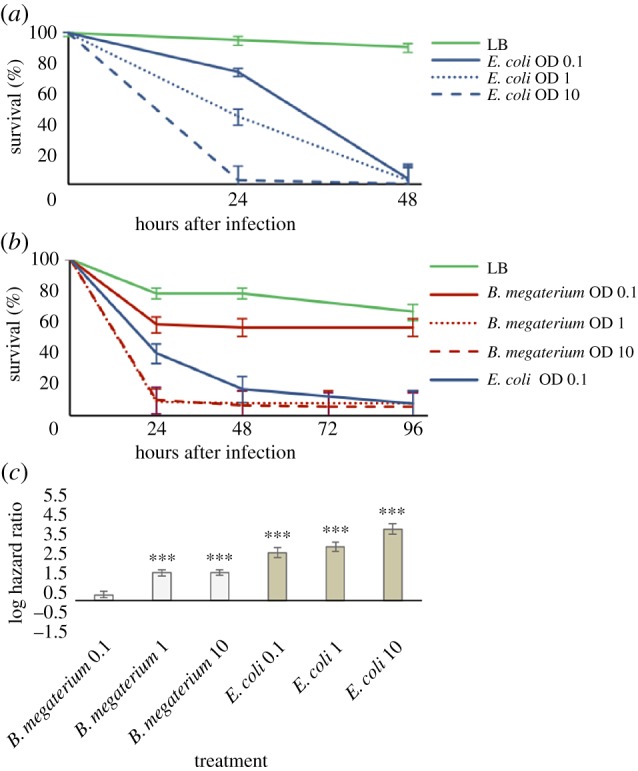Figure 1.

Bacterial infection severely affects survival of T. urticae. (a) T. urticae adult females were infected with E. coli at ODs 0.1, 1 and 10 and with LB as control. There is a clear reduction in survival of T. urticae after infection, independently of the bacteria concentration tested. (b) T. urticae adult females were infected with B. megaterium at ODs 0.1, 1 and 10, with LB and E. coli at OD 0.1 as controls. A reduction in the survival of T. urticae was observed after infection with B. megaterium with the two highest concentrations tested, but not for OD 0.1. In (a,b), vertical bars correspond to the standard errors of survival estimates, obtained from the Cox proportional hazards models. (c) Hazard ratios between T. urticae adults infected with LB or with bacteria (light grey, B. megaterium; dark grey, E. coli). Vertical bars correspond to the 95% CIs of the estimated hazard ratios. ***p < 0.001.
